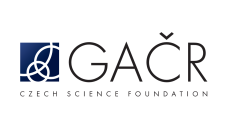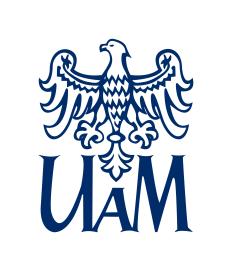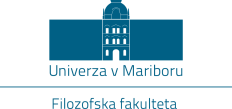Art Collections of the Central-European Aristocracy, 1795-1939: A Comparative Study
Principal Investigator at ZRC SAZU
Tina Košak, PhD-
Original Title
Art Collections of the Central-European Aristocracy, 1795-1939: A Comparative Study
Project Team
Renata Komić Marn, PhD, Polona Vidmar, PhD, Andrej Furlan, MA, Miha Preinfalk, PhD-
Project ID
N6-0382
-
Duration
1 March 2025–29 February 2028 -
Lead Partner
Michał Sebastian Mencfel, PhD, Adam Mickiewicz University Poznań
-
Project Leader
-
Financial Source
Slovenian Research and Innovation Agency

National Science Centre Poland

Czech Science Foundation (GAČR)

Partners
Adam Mickiewicz University Poznań, Masaryk University Brno, University of Maribor


The project’s main objective is to increase knowledge of art collecting of the Central European aristocracy in the 19th and first decades of the 20th centuries. Through a comparative analysis, we will examine the functions and roles aristocratic collections played at the threshold of the modern era on the territories of the Habsburg Monarchy and the former Polish-Lithuanian Commonwealth and how they were influenced by profound social, political, and ideological changes in this part of the continent. The following aspects of aristocratic art collections will be studied: 1) their structure and content; 2) their setting or location; 3) the ways of their display and representation; 4) the accessibility; 5) their legal status; 6) their transformations over time. The research will cover collections established by representatives of selected aristocratic families.
The project’s point of departure is the premise that aristocratic collecting in Central Europe was a relatively coherent cultural phenomenon despite differences resulting from dissimilar local traditions and sociopolitical apparatuses. Also, it had some significant features distinguishing it from analogous phenomena in Western Europe due to the specificity of the region, for instance, its multiethnic and multicultural character.
The general research hypothesis reads: The 19th and early 20th-century Central European aristocracy, subjected to the strong pressure of sociopolitical and ideological turns was able to effectively use the traditional instrument of art collecting to redefine and consolidate its position in democratising, bureaucratising and nationalising societies of Central Europe.
As to verify the hypothesis, the following research segments will be addressed:
1) To what extent and how were aristocratic collections influenced and redefined by the growing nationalist and democratic tendencies?
2) What role did aristocratic collections play in the reborn and newly established nation-states during the interwar period?
3) What was the old “aristocracy of blood” attitude towards the new “aristocracy of money”, and how did these two influence each other?
4) What was the relationship between aristocratic collections and public museums during “the museum age”?
There has been no extensive comparative research on aristocratic collecting in Central Europe, and only a few similarly profiled studies have been conducted regarding other parts of the continent. Thus, the project’s novelty lies primarily in the fact that this is the first comprehensive study of 19th-century aristocratic collections conducted by a broader international consortium, resulting in its comparative nature. In addition to the comparative-synchronous perspective, a diachronic perspective is also adopted; particular attention is paid to the dynamics of aristocratic collecting prompted by sociopolitical changes.
The project team consists of art historians and a historian from Poland, Czech Republic, and Slovenia, at different stages of their careers, from senior researchers to PhD candidates, all of whom specialise in the history of collecting and nobility.
The expected project results include workshops, an international conference, scientific articles, and the preparation of manuscripts to be published as a collective monograph after the end of the project. The team plans to disseminate project findings to the wider general public with lectures, guided tours, and an exhibition; results will also be regularly disseminated in the university study programs at all three levels (from. B.A. to doctoral).
TUŠAR, Magda (oseba, ki intervjuva), KOŠAK, Tina (intervjuvanec). Kulturni nazori plemstva, turkerije in umetniška domišljija po uboju zadnjega azteškega vladarja. Ljubljana: Radiotelevizija Slovenija javni zavod, 2025. 1 spletni vir (1 zvočna datoteka (50 min, 44 sek)). Kulturni fokus. https://prvi.rtvslo.si/podkast/kulturni-fokus/56190783/175113069. [COBISS.SI-ID 227985923]
KOŠAK, Tina. Baročne rezidence in dediščina plemstva na primeru gradu Hrastovec : predavanje na delavnici za strokovno izobraževanje srednješolskih učiteljev umetnostne zgodovine "Baročna Ljubljana", Filozofska fakulteta Univerze v Ljubljani, 15. 3. 2025. [COBISS.SI-ID 230546179]
KOŠAK, Tina. The fate of castles and manors in Yugoslavia after the dissolution of the Habsburg Monarchy: a conservator’s view. Predavanje na mednarodni znanstveni konferenci "History, Culture, and Heritage of Manors in Central and Eastern Europe", Vytautas Magnus University, Kaunas (Litva), 24.-26. apr. 2025. [COBISS.SI-ID 234668291]
KOŠAK, Tina. Plemiške zbirke v obdobju baroka. V: KLEMENČIČ, Matej (ur.), et al. Barok v Sloveniji : slikarstvo in kiparstvo : [Narodna galerija, Prešernova 24, Ljubljana, 10. april - 9. november 2025]. Ljubljana: Narodna galerija, 2025. Str. 175-191, ilustr. ISBN 978-961-7209-15-0. [COBISS.SI-ID 232290051]
KOŠAK, Tina. Baročna dela v zbirkah 19. in 20. stoletja. V: KLEMENČIČ, Matej (ur.), et al. Barok v Sloveniji: slikarstvo in kiparstvo : [Narodna galerija, Prešernova 24, Ljubljana, 10. april - 9. november 2025]. Ljubljana: Narodna galerija, 2025. Str. 193-209, ilustr. ISBN 978-961-7209-15-0. [COBISS.SI-ID 232292611]
KOMIĆ MARN, Renata. Between home and public space : the Strahl and Attems collections and their role in the development of museum activity in Carniola and Styria. Predavanje na mednarodni konferenci "emergence, transformation, maintemance. private collections open to the public from the 18th century to the present day", Poznań - Rogalin (Poljska), 29.-31. maj 2025. [COBISS.SI-ID 240030723]
KOŠAK, Tina. Three castle collections of the Counts of Herberstein open to the public. Predavanje na mednarodni konferenci "emergence, transformation, maintemance. private collections open to the public from the 18th century to the present day", Poznań - Rogalin (Poljska), 29.-31. maj 2025. [COBISS.SI-ID 240030979]
KOŠAK, Tina. Javno vodstvo po razstavi Barok v Sloveniji. Plemiške zbirke in naročništvo: Narodna galerija, Ljubljana, 21. 9. 2025. [COBISS.SI-ID 250085123]
KOŠAK, Tina. Umetnostne zbirke grofov Herberstein: transformacije v 19. in 20. stoletju: predavanje v okviru Agatinih dnevov 2025, Viteška dvorana gradu Hrastovec, 4. 9. 2025. [COBISS.SI-ID 250081795]
KOMIĆ MARN, Renata. Zbirka tapiserij v palači grofov Attems v Gradcu : lastniki, postavitve in identitete. Acta historiae artis Slovenica. [Tiskana izd.]. 2025, letn. 30, št. 1, str. 83-128, ilustr. ISSN 1408-0419. DOI: 10.3986/ahas.30.1.04. [COBISS.SI-ID 254742787]
KOŠAK, Tina. From Kunstkammer to Ahnengalerie and Family Museum: international collecting practices as reflected in noble residences in Styria and beyond : prispevek na mednarodni konferenci "Das kulturelle Erbe in einer Zwischenzone Europas: Burgen, Schlösser und Klöster im Donau-Alpen-Adria-Raum = Cultural Heritage in a Transitional Zone: Castles, Palaces and Monasteries in the Danubian-Alps-Adriatic Area", Bad Radkersburg (Avstrija)), 17.-18. 10. 2025. [COBISS.SI-ID 254742531]